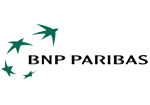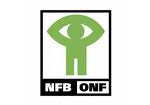MaxDB Maestro online Help
| Prev | Return to chapter overview | Next |
Groups
Groups were implemented in MaxDB to simplify security administration in databases with a large number of users and with a complex security system. All private objects created by members of the group are identified by the group name. The owner of a private object is the group, not the user who created the object. Each user can work with any private object of the group, as if this user were the owner of the object. Privileges can only be granted or revoked from the group. A privilege cannot be granted or revoked from a single member of the group.
Creating Groups
New groups are created within Create Group Wizard. In order to run this wizard you should select the Groups list or any object from that list and then use the Create New Group item from the popup menu.
Editing Groups
Groups are edited within Group Editor. In order to open the editor you should
| • | select the group for editing in the explorer tree (type the first letters of the group name for quick search); |
| • | select the Edit Group item from the popup menu. |
Dropping Groups
To drop the existing group:
| • | select the group to drop in the explorer tree; |
| • | select the Drop Group item from the popup menu |
(alternatively, you may use the corresponding link of the Navigation Bar)
and confirm dropping in the dialog window.
| Prev | Return to chapter overview | Next |




 Download
Download Buy
Buy
